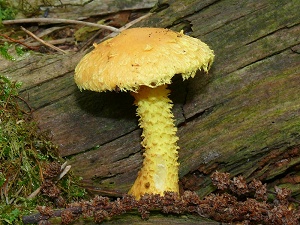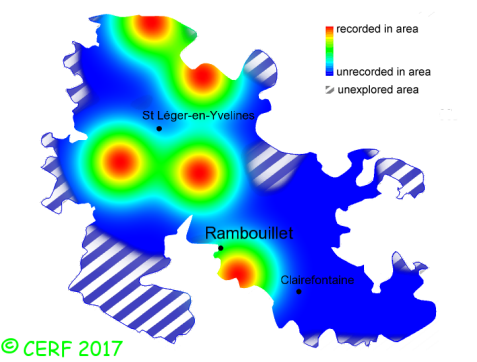| Pholiota flammans (Batsch:Fr.) P. Kumm. |
|
|
|
|
|
|
The cap is lemon yellow to orange yellow; its margin is smooth. The cap surface is scaly, viscid or sticky. The stem is smooth above ring, scaly below, not viscous, with a cottony ring near the stem apex. The flesh is lemon yellow, unchanging; its taste is bitter; the odour is mouldy or of radish; its texture is fibrous. The gills are yellow then red-orange, adnate, crowded . The spore print is rusty brown. This species is saprophytic. It grows on dead wood, in tufts, in coniferous woods, on stumps or logs (Mediterranean), with spruce, pine. The fruiting period takes place from July to November.
Chemical tests : gill cystidia staining with blue in lactic acid. Distinctive features : dry or slightly sticky, bright yellow to range cap surface, with upturned scales of the same colour in the youth; stem covered with scales, concolorous to cap; on conifers Pholiota flammans is quite rare and localised in the forest of Rambouillet, and is quite rare, more generally speaking . | ||
|
page updated on 14/01/18

